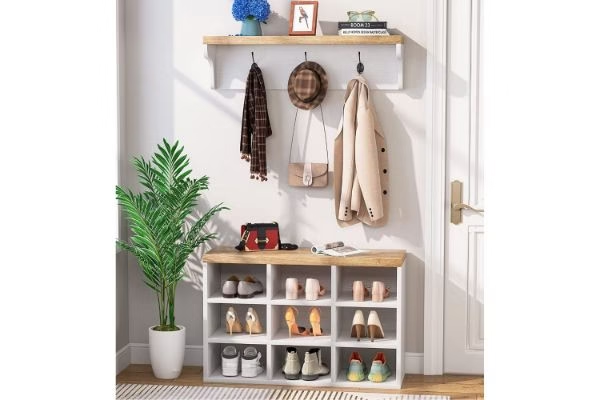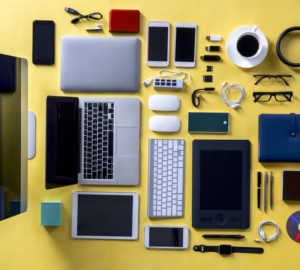The idea of a dedicated “mudroom” – a spacious entryway for shedding shoes, coats, and bags – might seem like a luxury reserved for larger homes. In Nairobi, where apartments and townhouses often prioritize living space, a separate mudroom is a rare commodity. Yet, the need to manage daily clutter at the entrance remains universal. Where do those dusty shoes go after a walk, or that raincoat after a sudden mvua?
At Retail Place, we understand that every square inch counts. This comprehensive guide offers creative and practical mudroom alternatives for small spaces in Kenya, helping you create a functional and organized “drop zone” right by your door, no matter how compact your entryway.
Why You Need an Entryway “Drop Zone” in Kenya (Even Without a Mudroom)
Even without a formal mudroom, a designated entryway space is crucial for:
- Preventing Clutter Creep: Shoes, bags, keys, and mail quickly accumulate, making your home feel messy the moment you walk in.
- Maintaining Cleanliness: Especially with Nairobi’s dusty conditions or sudden rains, a place to shed outdoor items prevents dirt from tracking further into your home.
- Boosting Efficiency: Knowing exactly where keys, wallets, and bags are before you leave saves precious minutes during busy mornings.
- Creating a Welcoming Vibe: A tidy entryway sets a positive tone for your home, for both residents and guests.
- Utilizing Underutilized Space: Even a tiny corner or a sliver of wall can be transformed into a highly functional area.
Creative Mudroom Alternatives for Small Kenyan Spaces
Here are actionable ideas to create an efficient entryway, leveraging smart storage and design principles:
1. The Vertical Power Play (Go Up!)
When floor space is limited, the walls are your best friends.
Wall-Mounted Hooks/Peg Rails:
- Install sturdy hooks at varying heights for coats, school bags, purses, and even umbrellas.
- A classic wooden peg rail adds charm and function.
- Pro Tip: Add a lower row of hooks for children to hang their own items, fostering independence.
Floating Shelves:
- A simple floating shelf above your hooks can serve as a “landing strip” for keys, mail, phones, or sunglasses.
- Add small decorative trays or bowls on the shelf to corral smaller items.
Slim Wall-Mounted Shoe Organizers:
- Instead of a bulky shoe rack, opt for narrow, tilt-out shoe cabinets that mount flush to the wall. These keep shoes hidden and prevent dust accumulation. Look for options at local furniture makers or online marketplaces.
Over-the-Door Organizers:
- If you have a nearby closet door, a shoe organizer or multi-pocket fabric organizer hung on the back can store shoes, hats, scarves, or small accessories out of sight.
2. The Multi-Tasking Furniture Approach (Every Piece Works Hard)
Choose furniture that serves more than one purpose.
Storage Bench:
- A compact bench at the entryway offers a spot to sit while putting on or taking off shoes.
- Crucially, choose one with a lift-top lid or cubbies underneath for hidden storage of shoes, bags, or sports equipment.
- Local carpenters can craft beautiful wooden storage benches to fit your exact space.
Narrow Console Table with Storage:
- If you have a bit more width, a slim console table with drawers or a lower shelf can act as your drop zone.
- Use drawers for keys, mail, and small essentials. The lower shelf can hold a basket for shoes or a decorative item.
Freestanding Hall Tree/Coat Rack:
- A vertical unit that combines hooks for coats, a small bench or shelf, and perhaps a shoe rack at the bottom. These “all-in-one” solutions are excellent for maximizing function in a single footprint. Look for slender designs that don’t overwhelm the space.
3. Creating a Defined “Zone” (Even Without Walls)
In open-plan homes, you can still define an entryway.
- Area Rug: A small, durable rug at the entrance visually delineates the “drop zone” and helps trap dirt from shoes. Choose a washable or easy-to-clean material.
- Strategic Lighting: A stylish wall sconce or a small ceiling light fixture can highlight the area, making it feel like a distinct space.
- Portable Shoe Tray/Mat: Place a rubber or plastic tray on the floor for muddy or wet shoes. This is essential for keeping other parts of the house clean, especially during rainy seasons.
- “Catch-All” Bowls/Trays: On a shelf or console, use a small decorative bowl or tray for keys, loose change, and other pocket emptying items.
4. Smart Organization & Maintenance (The Nairobi Nitty-Gritty)
- Shoe Management: Given the importance of shoe removal in many Kenyan homes, dedicated shoe storage is paramount. Whether it’s a slim cabinet, a shoe tray, or individual baskets per family member, ensure shoes have a home to prevent tripping hazards.
- Bag Strategy: Assign hooks for daily bags (school bags, work bags, shopping bags) to keep them off the floor.
- Mail & Paper Control: Install a wall-mounted file holder or a simple tray for incoming mail and important papers. Deal with mail daily to prevent accumulation.
- Umbrella Stand: A tall, slender umbrella stand is a must-have for Nairobi’s unpredictable weather.
- Regular Purging: Periodically review your entryway items. Do you still need that old receipt? Are there coats that belong in the closet? Keep only daily essentials in your “mudroom alternative” space.
- Custom Solutions: If you have an unusual space, consider commissioning a local carpenter to create a custom built-in unit that perfectly fits your dimensions and needs. This can be surprisingly affordable and highly effective.
You don’t need a sprawling entrance to have a functional and inviting “mudroom” in your Kenyan home. By cleverly utilizing vertical space, choosing multi-functional furniture, and implementing consistent organization habits, you can create an efficient drop zone that keeps clutter at bay, simplifies your daily routine, and ensures your home always starts (and ends) with a sense of calm.









